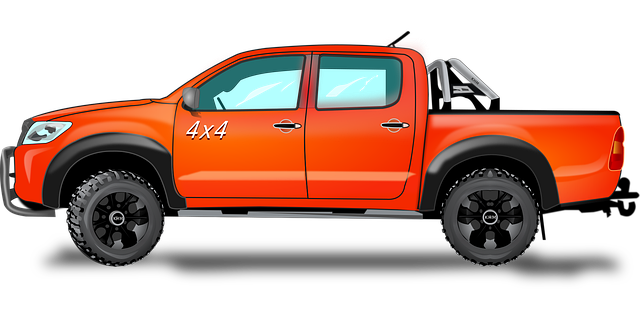The master cylinder, a critical component in any vehicle's braking system, converts pedal force into hydraulic pressure to activate brakes. This mechanism slows or stops the vehicle by pressing brake pads against rotors (disc brakes) or shoes against drums (drum brakes). Understanding and maintaining the master cylinder is crucial for safe driving as it connects the driver to the wheels, enabling controlled stopping power. Four Wheel Parts McAllen offers a wide range of high-quality automotive parts, including specialized four-wheel drive components, to support local drivers' needs, whether for challenging terrain or routine vehicle maintenance.
Master cylinders are vital components in four-wheel vehicles, acting as the core element in their braking systems. By generating and transmitting hydraulic pressure, they ensure precise control over deceleration. This article explores the intricate parts and construction of master cylinders, types suitable for diverse vehicle needs, and maintenance tips to keep them functioning optimally at Four Wheel Parts McAllen.
- Understanding Master Cylinders: The Core Component
- – Definition and basic function in four-wheel vehicles
- – Their role in the braking system
- Parts and Construction: How They Work Together
Understanding Master Cylinders: The Core Component

Master cylinders are a fundamental component in any vehicle’s braking system. They serve as the core mechanism for transmitting force from your brakes’ pedal to the corresponding calipers or wheel cylinders, enabling you to slow down or stop your vehicle.
When you press the brake pedal, hydraulic pressure is generated within the master cylinder. This pressure activates the braking action by applying force to the brake pads or shoes against the rotor or drum, thereby reducing the vehicle’s speed. Understanding how master cylinders operate is crucial when dealing with four wheel parts McAllen, as they are essential for maintaining safe and controlled driving conditions.
– Definition and basic function in four-wheel vehicles

The master cylinder is a vital four-wheel parts McAllen component in modern vehicles, particularly those with disc or drum brakes. Its primary function is to transmit force from the driver’s brake pedal to the vehicle’s braking system, enabling effective control over the vehicle’s speed and stopping ability. When the driver applies pressure on the brake pedal, the master cylinder pumps hydraulic fluid through a network of tubes to either press against the brake pads (disc brakes) or push the brake shoes against the drum (drum brakes), thereby slowing or stopping the rotation of the wheels. This mechanical advantage allows drivers to easily control their vehicle’s speed, even under heavy braking conditions.
– Their role in the braking system

The master cylinder is a vital component within the braking system of any vehicle. Acting as a key link between the driver’s brake pedal and the braking mechanism, its primary function is to transmit the force applied by the driver to all four wheels, ensuring controlled and efficient stopping power. This critical part, often referred to as one of the four wheel parts McAllen drivers rely on, plays a pivotal role in maintaining vehicle safety and stability, making it an essential element for any automotive enthusiast or mechanic to understand.
Parts and Construction: How They Work Together

Master cylinders are an essential four-wheel parts McAllen drivers rely on for safe and effective braking. By understanding their core function and intricate parts construction, you can ensure your vehicle’s braking system operates optimally. Whether you’re a professional mechanic or a car enthusiast, appreciating the nuances of master cylinders can help maintain peak performance and enhance your driving experience.



